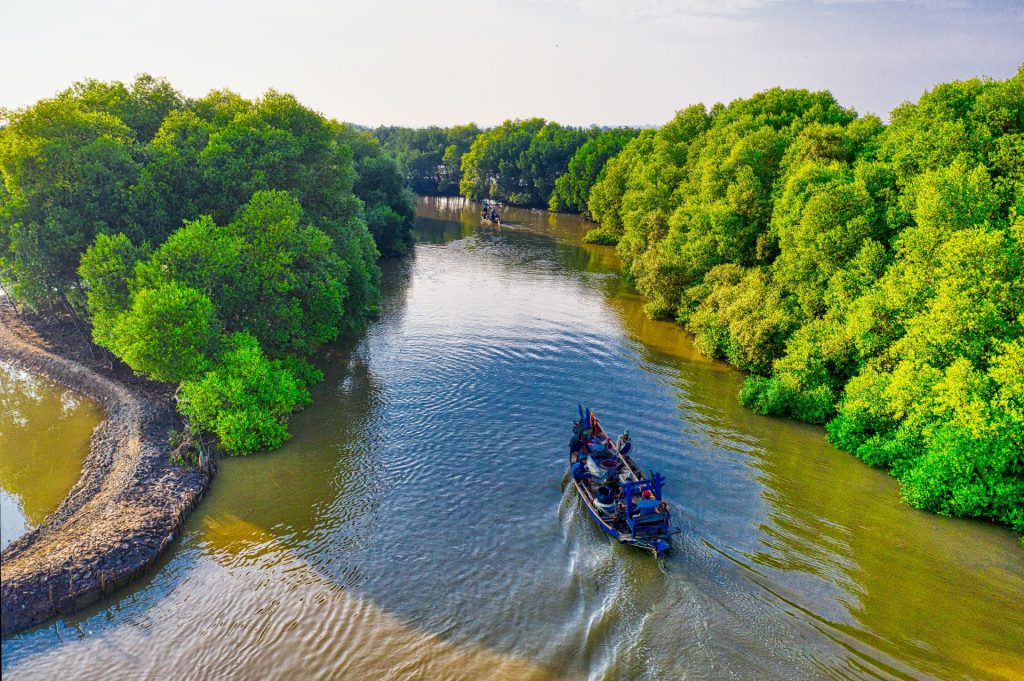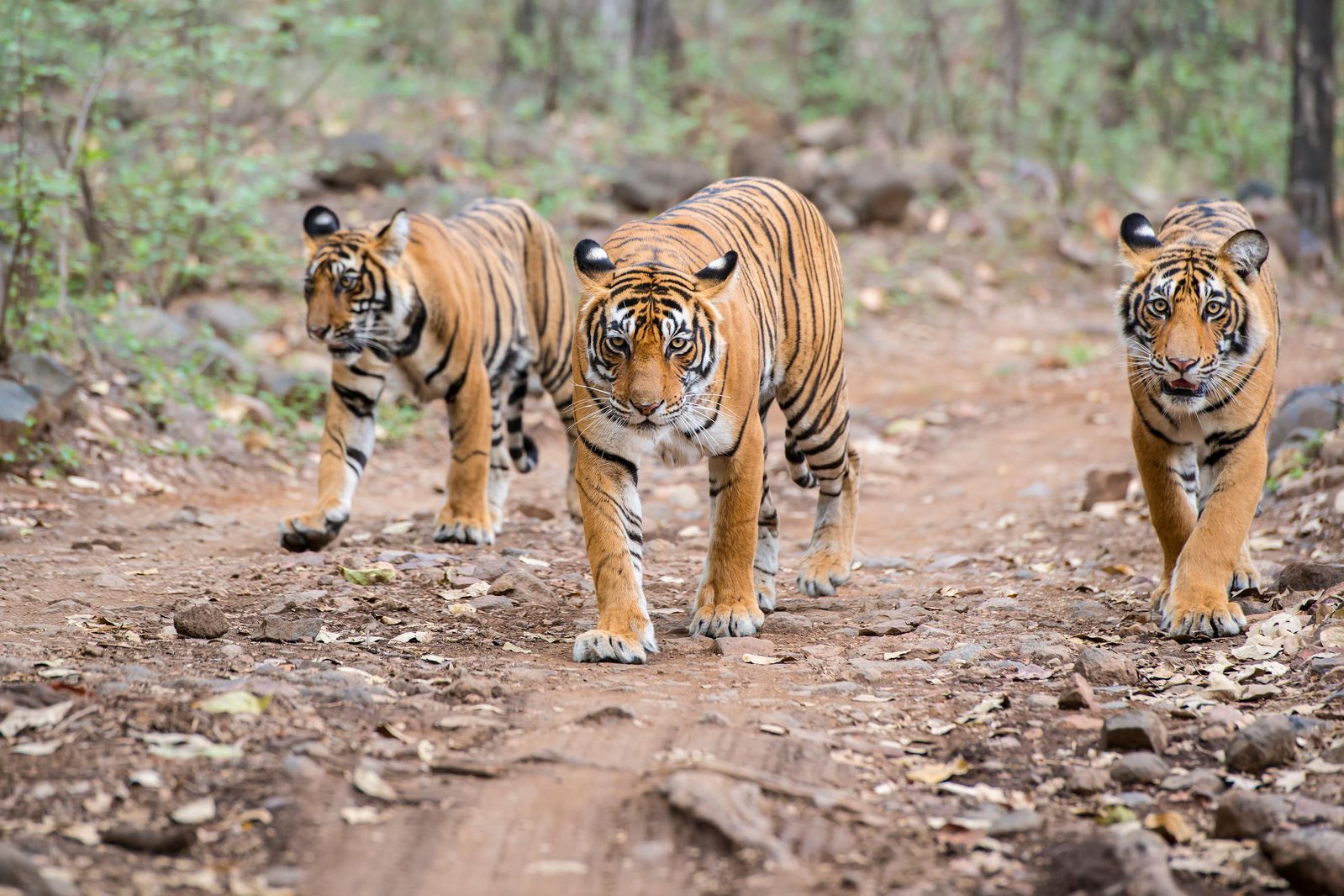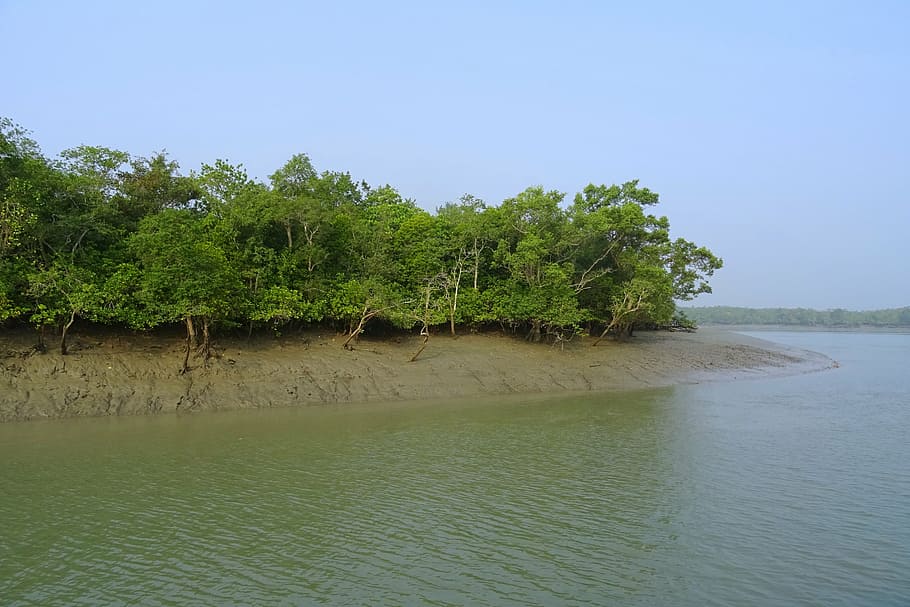Exploring the Untamed Beauty of Sundarbans National Park:
Introduction to Sundarbans National Park
The
Sundarbans National Park, located in the delta region of the Padma, Meghna, and Brahmaputra river basins, is the world’s largest tidal halophytic mangrove forest. Recognized as a UNESCO World Heritage site, the Sundarbans is renowned for its dense mangrove forests and as the home of the majestic Bengal tiger. This unique ecosystem is a complex network of tidal waterways, mudflats, and small islands, and it supports a diverse range of wildlife, including rare and endangered species.
The
Sundarbans is not just a wildlife sanctuary; it is also a critical protective barrier against the impact of storms and cyclones in the region. This forest acts as a buffer, absorbing the impact of storm surges and protecting the inland areas from the full force of nature’s fury. The park’s unique landscape, where freshwater rivers meet the salty waters of the Bay of Bengal, creates a rich and dynamic environment that supports a wide variety of life forms.

A Short History of Sundarbans Tiger Reserve
The history of the
Sundarbans Tiger Reserve is closely tied to the conservation efforts that have been made to protect the Bengal tiger. The area was declared a reserve in 1973 under the Project Tiger initiative, a key conservation program launched by the Indian government to save the tiger population. The establishment of the reserve marked the beginning of a concerted effort to preserve the unique
biodiversity of the Sundarbans.
Over the years, the reserve has expanded to cover an area of over 2,500 square kilometers, including a core zone that is strictly protected and a buffer zone where limited human activity is allowed. The Sundarbans Tiger Reserve is not just about tigers; it is a haven for a wide range of wildlife, including spotted deer, wild boars, and numerous species of birds and reptiles.
The Sundarbans has also been the site of significant research into the behavior and ecology of the Bengal tiger. Researchers have studied the tigers’ adaptations to the unique mangrove environment, including their ability to swim long distances and their reliance on the dense forest cover for hunting.

Geography of Sundarbans Forest
The Sundarbans is located in the delta region of the Ganges, Brahmaputra, and Meghna rivers, spanning both India and Bangladesh. The Indian part of the Sundarbans covers the southern tip of West Bengal, while the larger portion lies in Bangladesh. The region is characterized by a complex network of tidal waterways, mudflats, and small islands that are constantly reshaped by the shifting tides.
The Sundarbans is a low-lying region, with an average elevation of just a few meters above sea level. The forest is subject to regular tidal inundation, which plays a crucial role in shaping the landscape and supporting the growth of mangroves. The mangrove forests of the Sundarbans are among the most extensive in the world, and they are home to a wide variety of plant and animal species that have adapted to the challenging conditions of the tidal environment.
The Sundarbans is also an important region for the study of deltaic processes and coastal dynamics. The constant interplay between the rivers, tides, and sea creates a dynamic environment that is in a state of constant flux. This ever-changing landscape is both
beautiful and fragile, and it requires careful management to ensure its long-term survival.

Flora and Fauna of Sundarbans
The Sundarbans is renowned for its rich biodiversity, which includes a wide variety of plant and animal species. The dominant vegetation in the region is mangrove forest, which is characterized by species such as the sundari tree, from which the Sundarbans gets its name, and the gewa, goran, and kankra trees. These trees are specially adapted to the saline conditions and tidal inundation that characterize the Sundarbans.
The Sundarbans is also home to a remarkable
array of wildlife. The Bengal tiger is the most famous resident of the Sundarbans, and the park is one of the last strongholds of this iconic species. The tigers of the Sundarbans are known for their swimming ability and their tendency to prey on fish and other aquatic animals, in addition to the more typical prey such as deer and wild boar.
Other notable wildlife species in the Sundarbans include the estuarine crocodile, the Ganges river dolphin, and a variety of bird species such as the lesser adjutant stork, the white-bellied sea eagle, and the black-capped kingfisher. The Sundarbans is also home to several species of reptiles, amphibians, and fish, making it one of the most biodiverse regions in the world.

Planning Your Visit: When to Visit Sundarbans National Park?
The best time to visit the Sundarbans National Park is during the winter months, from November to February. During this period, the weather is cool and pleasant, with daytime temperatures ranging from 10 to 30 degrees Celsius. The winter months are also the best time for wildlife sightings, as the animals are more active and the dense vegetation of the forest is less overwhelming.
The monsoon season, from June to September, brings heavy rainfall to the Sundarbans, which can make travel difficult and limit the opportunities for wildlife viewing. However, the monsoon also transforms the landscape, filling the rivers and creeks to their brim and rejuvenating the forest with fresh water.
The pre-monsoon period, from March to May, is characterized by hot and humid weather, with temperatures often exceeding 40 degrees Celsius. While this period is not ideal for visiting, it is during this time that you may witness the unique phenomenon of the “Banya,” or tidal bores, which are powerful waves that surge up the rivers and creeks.

How to Reach Sundarbans National Park
The Sundarbans National Park is accessible by air, train, road, and water. The nearest airport is in Kolkata, which is well-connected to major cities in India and abroad. From Kolkata, you can take a train to Canning, which is the nearest railway station to the Sundarbans. From Canning, you can hire a taxi or take a bus to reach the entry points of the park.
Alternatively, you can take a direct bus from Kolkata to Sonakhali, Godkhali, or Basanti, which are the main entry points to the Sundarbans. From these points, you can take a ferry or a boat to reach the forest.
Traveling by water is one of the most
popular and scenic ways to reach the Sundarbans. Several river cruises operate from Kolkata to the Sundarbans, offering a unique and leisurely way to explore the park.

Where to Stay in Sundarbans?
There are several accommodation options available in and around the Sundarbans, ranging from luxury resorts to eco-lodges and budget guesthouses. Some of the popular places to stay include:
- Sundarban Tiger Camp: A luxury resort located on the banks of the river, offering comfortable accommodation and guided wildlife tours.
- Sundarban Riverside Resort: An eco-friendly resort that offers a close-to-nature experience with all modern amenities.
- Sundarban Houseboat: For a unique experience, you can stay on a houseboat and explore the waterways of the Sundarbans.
In addition to these options, there are several budget guesthouses and homestays in the nearby villages, where you can experience the
local culture and hospitality.

Popular Tourist Spots in Sundarbans National Park
The Sundarbans is home to several tourist spots that offer unique experiences and opportunities for wildlife viewing. Some of the most popular spots include:
- Sajnekhali Wildlife Sanctuary: This sanctuary is home to a variety of bird species, including herons, kingfishers, and eagles. It also has a watchtower and a visitor center with exhibits on the wildlife of the Sundarbans.
- Sudhanyakhali Watch Tower: One of the best places to spot tigers, this watchtower offers panoramic views of the forest and the river.
- Netidhopani: This spot is known for its ancient temple ruins and the nearby watchtower, which offers a great view of the forest.
- Dobanki Watch Tower: This watchtower is located near a freshwater pond that attracts a variety of wildlife, including deer, crocodiles, and birds.
- Sundarbans National Park: The core area of the park is where you can see the true wilderness of the Sundarbans, with its dense mangrove forests and rich wildlife.

Wildlife Safari and Exploration
Exploring the Sundarbans is a unique experience, as the park is primarily accessible by boat.
Boat safaris are the most popular way to explore the park and see its wildlife. These safaris take you through the narrow creeks and rivers of the Sundarbans, offering a close-up view of the mangroves and the wildlife that inhabits them.
In addition to boat safaris, you can also explore the park on foot by following the designated nature trails. Some of the trails are equipped with canopy walkways, which allow you to walk above the forest floor and observe the wildlife from a different perspective.
When exploring the Sundarbans, it is important to follow safety guidelines and respect the park’s rules and regulations. The Sundarbans is a wild and remote area, and it is important to be prepared for the challenges that come with exploring such a unique environment.

Best Places to Visit Near Sundarbans National Park
If you have time to explore the surrounding areas, there are several interesting places to visit near the Sundarbans National Park:
- Kolkata: The capital of West Bengal, Kolkata is a vibrant city with a rich history and culture. Some of the must-see attractions in Kolkata include the Victoria Memorial, Howrah Bridge, and the Indian Museum.
- Bakkhali: A seaside resort town located on the edge of the Sundarbans, Bakkhali is known for its long sandy beaches and tranquil atmosphere.
- Gosaba: A small town located on the edge of the Sundarbans, Gosaba is known for its traditional Bengali architecture and its role in the history of the Sundarbans.
- Jaldapara National Park: Located in the northern part of West Bengal, Jaldapara is home to a wide variety of wildlife, including the Indian rhinoceros, elephants, and tigers.

Travel Tips and Essential Information
When visiting the Sundarbans, there are a few important things to keep in mind:
- Permits: You will need a permit to enter the Sundarbans National Park. These permits can be obtained from the forest department or from the tourism office in Kolkata.
- Health Precautions: The Sundarbans is a remote area, and it is important to take precautions against mosquito-borne diseases such as malaria and dengue. It is also recommended to carry a basic first-aid kit and any necessary medications.
- Packing: When packing for your trip, be sure to include lightweight, breathable clothing, a hat and sunglasses, sunscreen, insect repellent, and a good pair of walking shoes. You may also want to bring binoculars, a camera, and a guidebook to help you identify the wildlife and plants you encounter.
- Responsible Tourism: The Sundarbans is a fragile ecosystem, and it is important to minimize your impact on the environment. Be sure to follow the “Leave No Trace” principles, avoid using single-use plastics, and respect the local wildlife and culture.

Conclusion
The
Sundarbans National Park is a unique and fascinating destination that offers a rare glimpse into one of the most biodiverse and ecologically important regions in the world. Whether you are a wildlife enthusiast, a nature lover, or simply looking for a unique travel experience, the Sundarbans has something to offer.
With its rich history, diverse wildlife, and
stunning landscapes, the Sundarbans is a destination that should be on every traveler’s bucket list. So pack your bags, plan your trip, and get ready to explore the incredible beauty of the Sundarbans.











